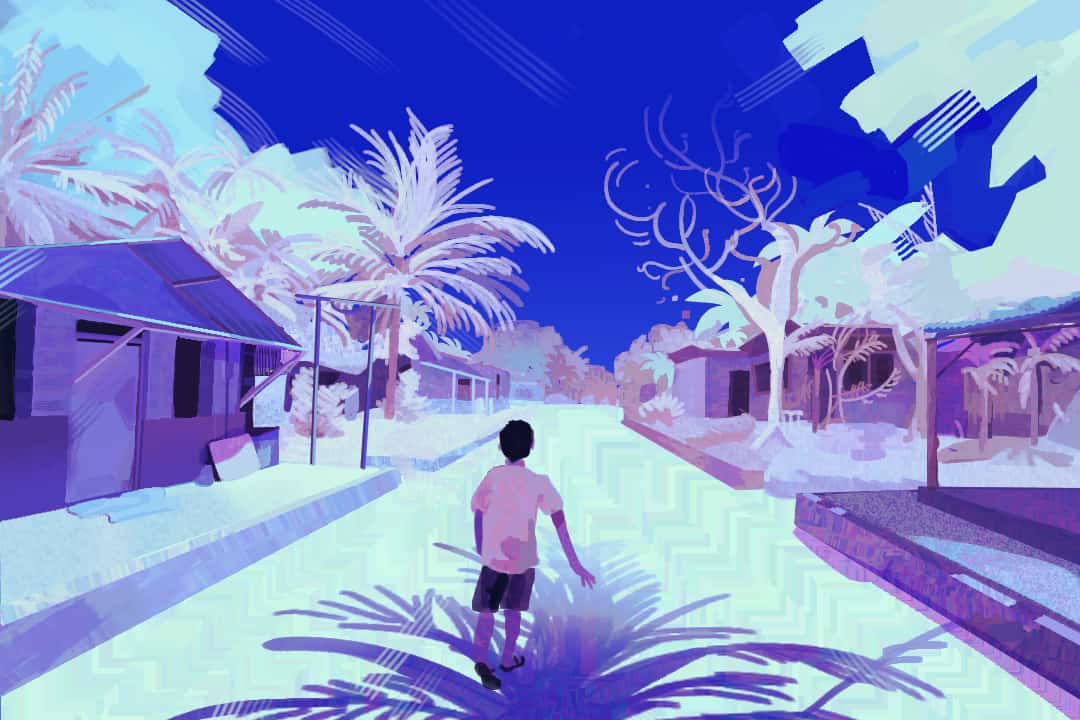The majority of people with colour blindness worldwide can actually see in colour. It is rare that colour blindness causes people to experience a complete absence of colour; instead, they usually lack the ability to distinguish between certain shades.
In the retina — the light-sensitive tissue toward the back of our eyes — we have photoreceptors known as rods and cones. Rods detect light, while cones detect colour. Cones can contain one of three different photopigments: red, blue, or green.
Colour blindness, or achromatopsia, is due to a cone malfunctioning. This malfunctioning is caused by any genetic mutation that inhibits the cone’s response to light, which then interferes with its phototransduction — the process by which cones and rods transmit signals from the eye to the brain.
There are, in fact, some cases of colour blindness where the world might appear like a movie from the early 1900s — black, white, and in shades of grey — as opposed to the red-green colour blindness that people are less familiar with. Known as complete achromatopsia, this is when an individual’s cones lack any function at all. While this is a global rarity, it is relatively prevalent in Pingelap Island.
Achromatopsia in Pingelap islanders
Pingelap Atoll Island is an isolated Micronesian island found in the South Pacific. After a catastrophic tsunami in the late eighteenth century, the island was left with around a mere 20 survivors. This population bottleneck, combined with the remoteness of the island and a prominent religion that disallowed inhabitants to marry outside of their religion, resulted in the loss of genetic diversity and allowed the mutation to persist.
One survivor, the king, possessed a genetic mutation in his CNGB3 gene, which provides instructions to make a subunit of an important protein found in photoreceptors within the retina. A mutation in this gene causes cone dysfunction that results in complete achromatopsia.
As the years progressed, this mutation was transmitted across generations, and today 10 per cent of the inhabitants of Pingelap Island have complete achromatopsia. This is an anomaly compared to the rest of the world where the prevalence of complete achromatopsia is roughly 0.0033 per cent.
As you can imagine, complete colour blindness requires adaptation for navigating and surviving the world. To compensate for this deficiency in cone function, the people of Pingelap Island try to blink, squint, cover their eyes, or readjust in coordination with the lighting. Squinting allows them to focus their vision on one area and restricts the number of points of entry that light has into the eye.
De Wilde’s photographs
Sanne De Wilde is a Belgian photographer whose projects dabble at the intersection of inheritable characteristics, such as dwarfism, albinism, and colour blindness; the location in which such characteristics are prevalent; and the reputation that the characteristics have in a social context. Through this work, she is able to present lesser-known perspectives of the world to her audience.
By prompting people to truly empathize with someone who has a genetic mutation that impacts their daily life, her work calls attention to the things that people without such conditions may take for granted.
For her project “The Island of The Colorblind,” she uses different mediums of photography to showcase and educate her audience on complete achromatopsia in Pingelap Island. The diversity in her work can be a metaphor for how a single scene can appear so different to different people. Using long exposure, she captured black-and-white portraits of islanders with complete achromatopsia.
Long exposure is a stylistic technique that allows for photos with the appearance of simultaneous stillness and motion. Photographers can accomplish this by leaving the shutter of the camera open for longer than usual.
While these black-and-white photographs were symbolic of how some individuals with colour blindness might view the world, other islanders claimed to see small subtleties or inflections of color, like maybe red or blue. To portray this, De Wilde also took infrared images, a challenge that required technology sensitive to infrared light.
Infrared wavelengths are longer than the wavelengths of light that are visible to the human eye. Infrared photos, then, can allow photographers to capture light wavelengths of the spectrum that cannot be seen by the naked eye. Therefore, photographers use infrared photography as a tool to portray nonstandard nonstandard colour perceptions. Infrared images capture unique contrasts, adding brightness or darkness or revealing new textures. Photography is also a medium to which one can add special effects and colour filters that were not part of the original photograph.
De Wilde collaborated with colourblind collaborators on the island, asking them to paint over her images. In a New Yorker article, Max Campell, a New York-based writer and photographer, writes about De Wilde’s work: “The head of a dog, slaughtered for a celebration, turns an unexpected yellow at the hands of an achromatic collaborator, a hint of red for the snout. A parrot has been given a technicolor coat that its author cannot see.” These surprising palettes demonstrate the colourful distorting lens through which people with colour blindness might view the world.
Providing a viewer who can see colour with insight into how people with colour blindness might see the world, De Wilde’s photographs remind us how everyone’s lived experiences, genetic inheritances, and background might influence their perspectives. De Wildes’ artwork advocates, educates, entertains, and enlightens the viewer, and, like life, is open to many interpretations.



No comments to display.